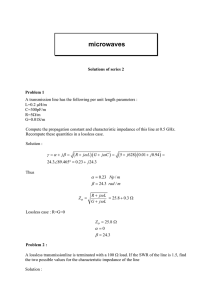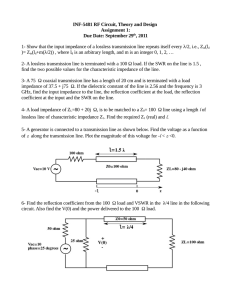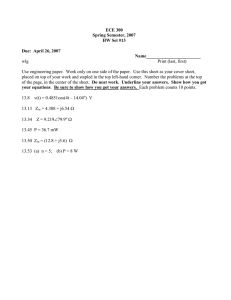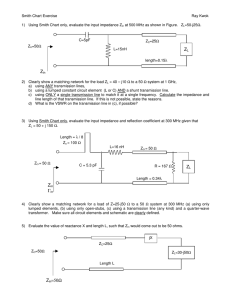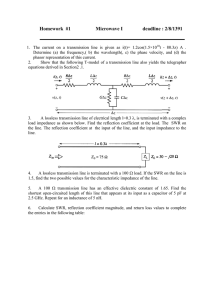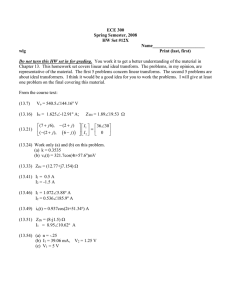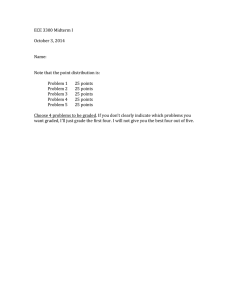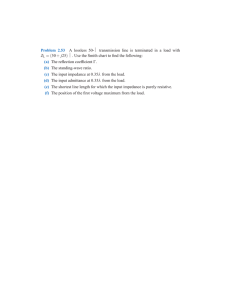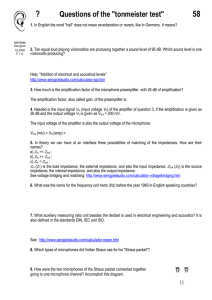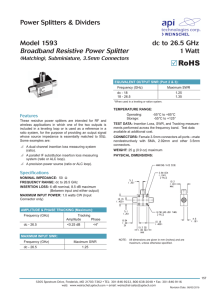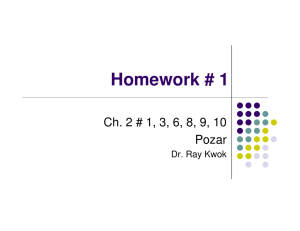INF5481 RF Circuit, Theory and Design Assignment #1
advertisement
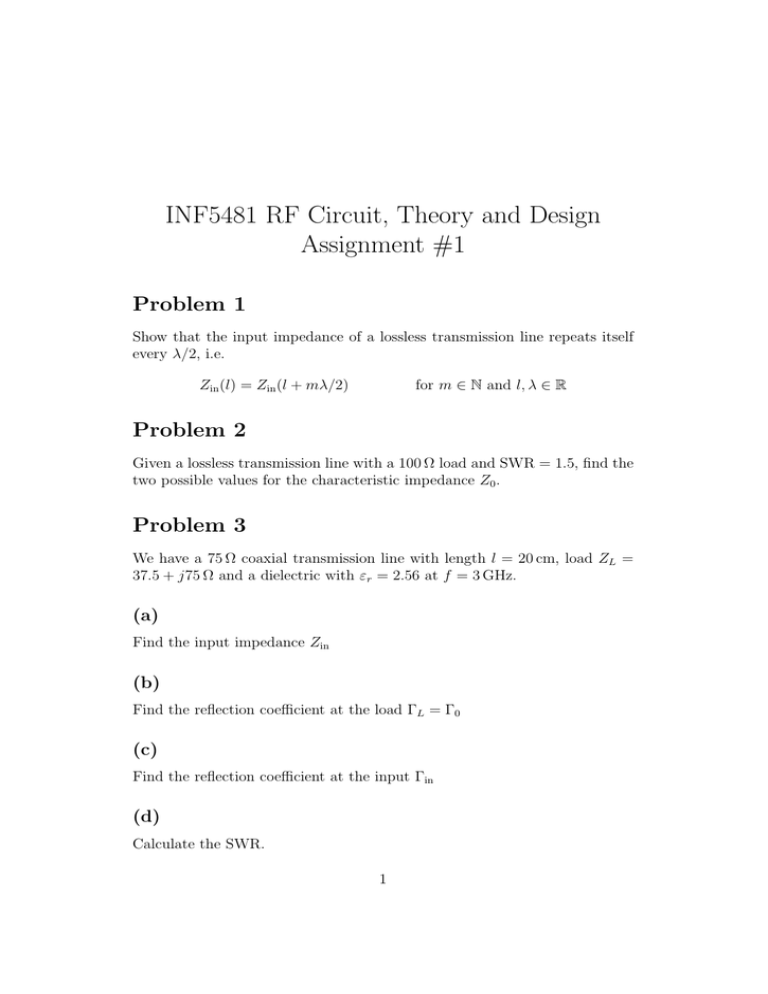
INF5481 RF Circuit, Theory and Design Assignment #1 Problem 1 Show that the input impedance of a lossless transmission line repeats itself every λ/2, i.e. for m ∈ N and l, λ ∈ R Zin (l) = Zin (l + mλ/2) Problem 2 Given a lossless transmission line with a 100 Ω load and SWR = 1.5, find the two possible values for the characteristic impedance Z0 . Problem 3 We have a 75 Ω coaxial transmission line with length l = 20 cm, load ZL = 37.5 + j75 Ω and a dielectric with εr = 2.56 at f = 3 GHz. (a) Find the input impedance Zin (b) Find the reflection coefficient at the load ΓL = Γ0 (c) Find the reflection coefficient at the input Γin (d) Calculate the SWR. 1 INF5481: Assignment #1 Problem 4 Z0 =? l =? ZL = 80 + j20 Ω Zin = 100 Ω Figure 1: Diagram for problem 4, where Z0 and l is unknown. You have a load ZL = 80 + j20 Ω which you want to match to 100 Ω, see figure 1. Find the required Z0 (real) and length l (real). Assume all transmission lines are lossless and air filled, calculate the length in both λ and in meters for f = 3 GHz. TIPS: Express the input impedance Zin as two equations, one for the real part and another for the complex part. Treating tan(βl) as an unknown, you now have 2 equations and 2 unkowns. Problem 5 In this exercise we will explore the voltage at different locations along the “Quarter-Wave” transmission line in figure 2. We will assume a lossless transmission line Z0 . Plot the voltage magnitude V (z) for −l ≤ z ≤ 0. ZG = 100 Ω Z0 = 100 Ω ZL = 80 − j40 Ω VG = 10 V l = 3λ/2 d=l z = −l d=0 z=0 Figure 2: Diagram for problem 5, with generator and load. Also shown are the two coordinate systems used by the book. Page 2 of 3 INF5481: Assignment #1 Problem 6 We now study a “lambda-quarter transformer” shown in figure 3. ZGs = 50 Ω Z0 = 50 Ω ZGp = 25 Ω + VG = 10 V ZL = 100 Ω Vin - l = λ/4 Figure 3: Diagram for problem 6 (a) Convert the length l = λ/4 to meters for the following cases (i) f = 50 Hz and εr = 1 (found in our wall socket) (ii) f = 16 MHz and εr = 4 (typical microcontroller) (iii) f = 3 GHz and εr = 4 (typical CPU) (iv) f = 5 GHz and εr = 4 (WiFi 802.11ac) (v) f = 60 GHz and εr = 12 (WiFi 802.11ad) (b) Find the reflection coefficent at the load and the standing wave ratio SWR. (c) Find the input impedance looking into the transmission line and express the voltage at the input Vin . (d) Calculate the power delivered to the load. Page 3 of 3
